Heart blocks.
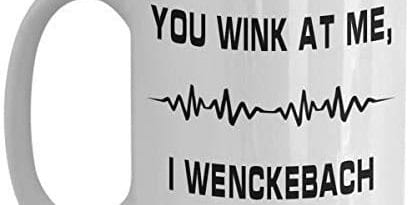

The PR interval is prolonged (> 5 small squares) but that prolongation is the same with every beat.

Mobitz type 1 is also called Wenkebach just to confuse and annoy everyone. The PR interval stretches from beat to beat then you get a dropped beat and the whole thing starts over again. The number of beats the PR interval stretches before dropping a beat varies from patient to patient--it may be 3 to 1, 4 to 1 etc.
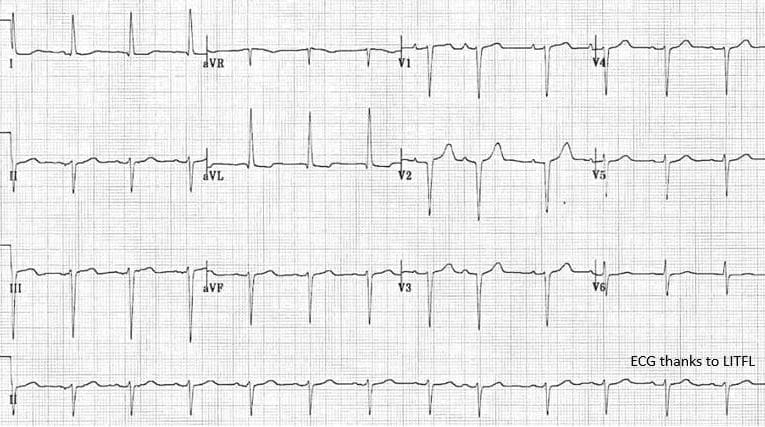
You can see left axis deviation. Small r and big s waves in the inferior leads (ll,lll,aVF) as well as small q big R wave in lateral leads (l,aVL).
if this gentleman had coronary artery disease it is a predictor of total and cardiac mortality. However if he does not have known CAD it is of little or no prognostic significance.
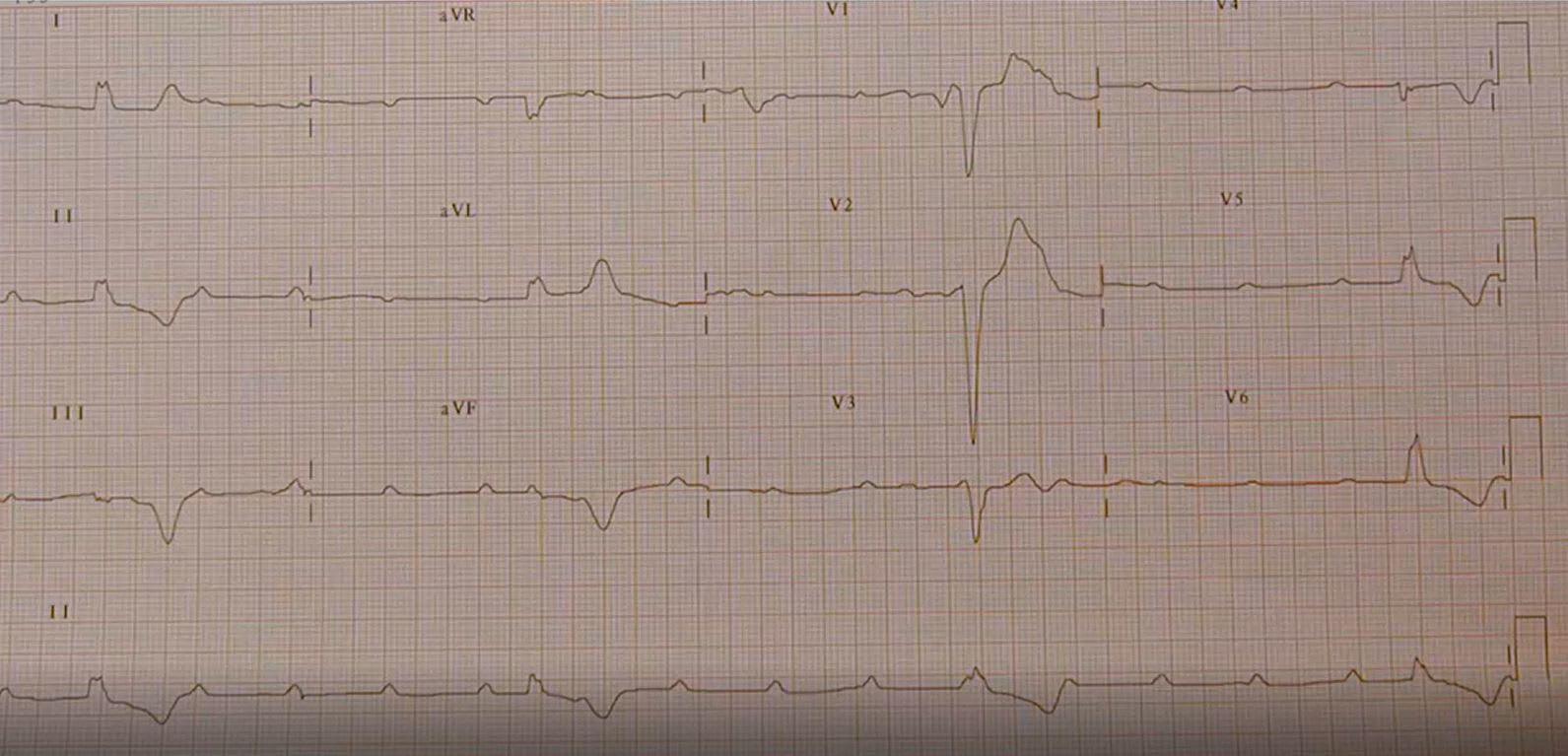
There is complete dissociation between the P waves and QRS complexes. The ventricle is "escaping" at a rate of about 20/min. No wonder he collapsed.

There is consistently 2 P waves that do not conduct. The 3rd always conducts and its PR interval is constant. So it is Mobitz type 2.

Sinus rhythm. Left axis deviation. Broad QRS, Downward deflected QRS V1. Notched R wave lateral leads with t wave inversion---------LBBB.
Use Sgarbossa criteria (do what I do when I forget and google it) if the patient has a LBBB and you think they may have suffered a myocardial infarct.
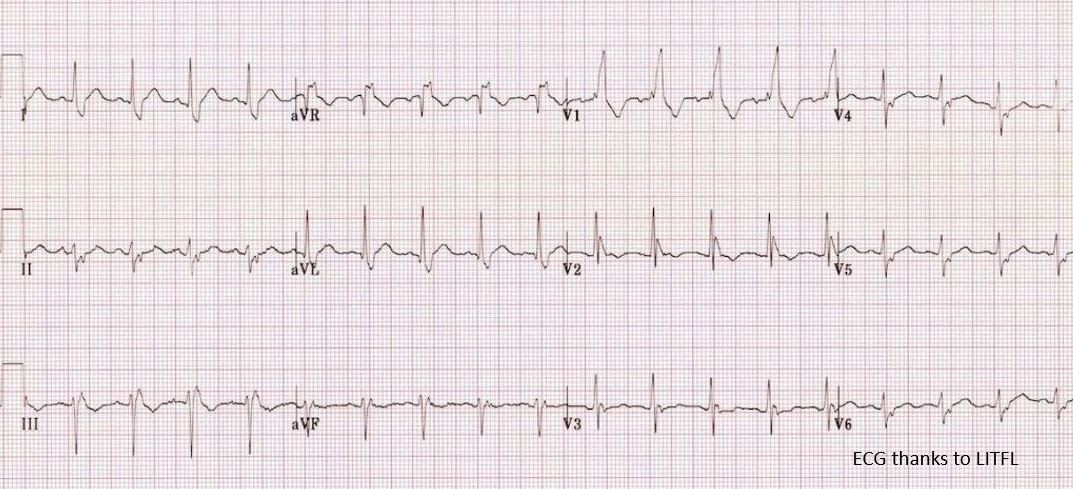
The ECG shows sinus tachycardia with a RBBB. Note the left axis deviation (voltage up in lead l, down in aVF) which is from a LAFB (Left anterior fasicular block).
So---a bifasicular block.
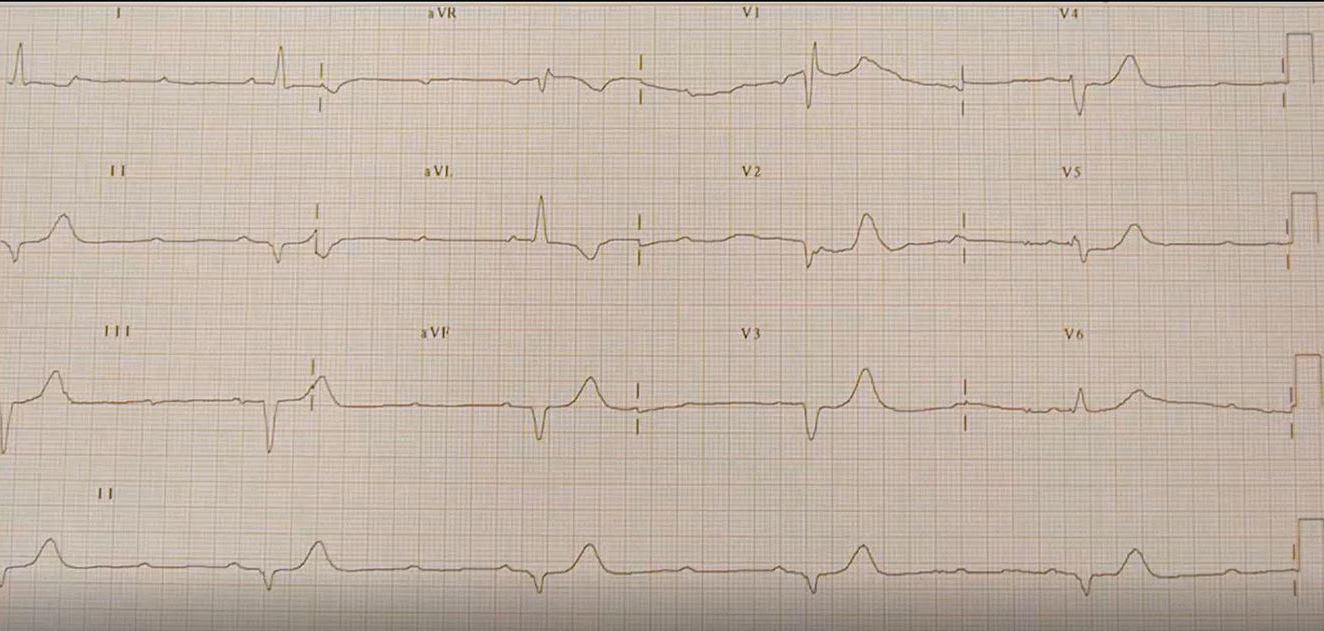
You would expect with such a slow heart rate that it would be a third degree heart block. However if you look closely the Ps and QRSs are not dissociated. It is in fact Mobitz type 2 that required a temporary then permanent pacemaker.
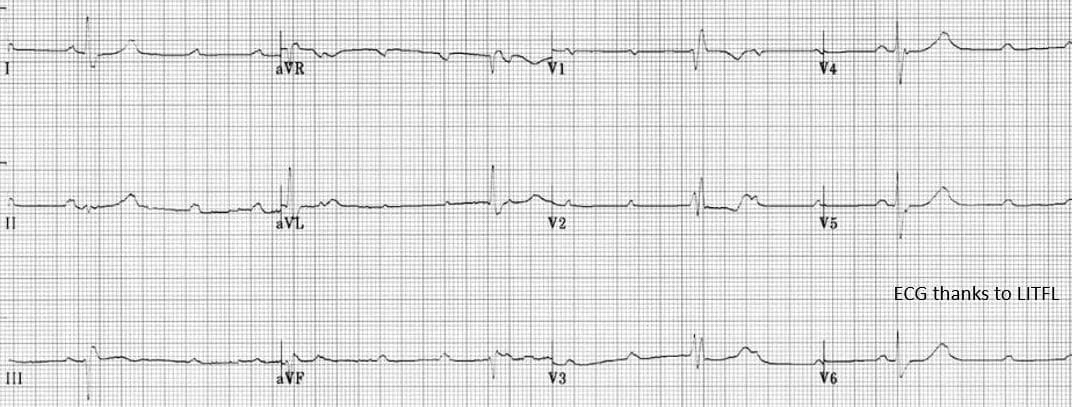
The tri bit is:
3rd degree heart block
RBBB
LAHB (Left axis deviation)
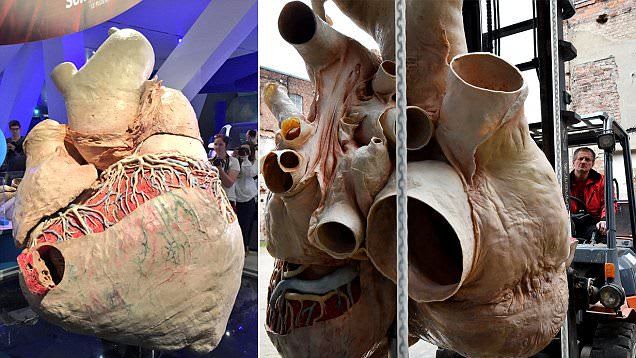
For terrestial animals the elephant has the biggest heart. The world's smallest heart is the fairyfly---a tiny wasp <2mm long.